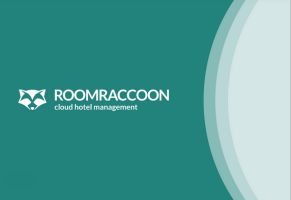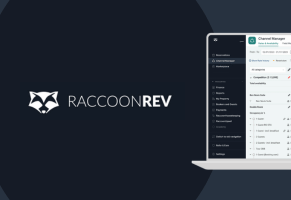Determine Your Property's Average Daily Rate With
Our Free ADR Calculator
Knowing your hotel's ADR is vital for pricing strategies and comparing against competitors. ADR analysis over time provides valuable insights.
What is ADR?
The Average Daily Rate (ADR) is an essential metric in the hotel industry that calculates the average earnings per room, excluding complimentary rooms or ancillary services.
The average daily rate formula is a simple way to find out how much, on average, guests pay to stay in a hotel for one night. To calculate ADR, you add up all the money the hotel made from room bookings in a day and then divide it by the number of rooms booked that day.
Example: ADR only includes revenue from room bookings and excludes other sources like food, drinks, and conference facilities. This can distort overall hotel revenue with substantial revenue streams beyond room bookings.
Seasonal trends affect ADR. Higher demand in peak seasons can increase rates, while off-peak periods may require promotional pricing. A year-over-year comparison of revenue reports is necessary for a balanced view of ADR performance.
How do you calculate your hotel's ADR?
Here's the formula to calculate your average daily rate.
ADR = Total Room Revenue / Number of Rooms Sold.
For example, if your hotel earned $1000 in room revenue and sold 10 rooms, the ADR would be ADR = $1000 / 10 = $100.
Assessing your current financial success and tracking your performance against monthly and annual goals can be achieved using ADR. Monitoring hotel success over various periods is vital to establishing accurate projections and managing the hotel effectively.
Three strategies to increase your hotel's ADR
To increase your revenue from average daily rates, providing your guests with an exceptional experience is important. If your customers leave with only positive feedback, it becomes a viable pricing strategy for maintaining long-term profitability.
Here are some suggestions for enhancing your ADR.
Strategy 1: Develop a solid and effective marketing plan.
When creating your marketing plan, focus on your target audience and the best online travel agency to meet their needs. Prioritise guest experience marketing by providing amenities that cater to their preferences. For instance, if you're targeting families on vacation, offer activities suitable for them. If you're targeting business travelers, ensure your facilities have strong wifi.
Additionally, consider implementing contactless services such as mobile check-in, digital messaging, and contactless payments to make their stay more convenient.
Strategy 2: Use dynamic pricing
Dynamic pricing involves changing your room rates to match the current conditions, such as seasonal changes, special events, and high demand. This allows hotels to adjust their prices to maximize revenue, not just occupancy. Targeting different market segments aims to attract the right customer at the right time.
For example, offering multi-night discounts and seasonal promotions can entice price-sensitive leisure travelers.
It's essential to have a revenue management software system to maximize revenue and boost ADR.
Strategy 3: Build a positive hotel online reputation
In the hospitality industry, reviews are everything. Positive reviews can create buzz around your business and allow you to raise prices without deterring potential customers. Consequently, implementing methods to obtain more reviews can increase your average daily rate (ADR).
Here are a few methods to get feedback:
- Ask for feedback at the front desk.
- Check-in with guests during their stay to ensure their satisfaction.
- Send follow-up emails after a guest has departed, requesting a review and explaining how it can enhance future stays.
You need an email template that can be personalized to gather valuable insights from guest reviews and improve customer service and overall experience.
What is the difference between ADR and ARR?
ADR measures the daily rate, while ARR tracks room rates, whether monthly, weekly, or quarterly, over a long period. In the hospitality industry, different metrics are used to measure hotel performance. Average Room Rate (ARR) and Average Daily Rate (ADR) are just two of the most commonly used metrics. Below, we briefly explore more.
What other key performance indicators do hoteliers use?
RevPAR (Revenue Per Available Room) is a crucial performance indicator many hoteliers deem the most significant. It represents the revenue generated per available room, whether occupied or not. RevPAR aids hotels in accurately pricing their rooms and measuring their revenue-generating performance. As a widely used metric, RevPAR allows hotels to compare themselves against other similar properties.
Another KPI to factor in is the occupancy rate.
You need to calculate the occupancy rate to determine how many rooms in your property are rented. This percentage is determined by dividing the total number of units currently occupied by the total number of units available.
The occupancy rate is essential for property owners and hoteliers to determine the percentage of their currently occupied property. By analyzing occupancy rates, property owners can identify patterns in guest behavior that can help them determine what is working well to increase occupancy and what needs improvement. This analysis can provide valuable insights that can inform decisions to improve business.
What about the total revenue generated by the property and all its services? That is TRevPAR, the Total Revenue Per Available Room.
TRevPAR has a significant advantage as it considers revenue earned from all hotel departments, such as food and beverage sales, meeting spaces, spas, golf, parking, and even phone/internet services. This is particularly important for full-service hotels that offer a wide range of F&B options. TRevPAR also considers miscellaneous income like cancellation and resort fees, which may be overlooked in the overall performance assessment.
Speaking of overall performance assessment, have you heard about GOPPAR?
GOPPAR is an acronym for Gross Operating Profit Per Available Room. This widely used performance metric helps evaluate the connection between a hotel's revenue and expenses, providing a comprehensive understanding of its overall business health. By understanding GOPPAR, you can efficiently turn your revenue into profit.
Key takeaways about ADR
Our ADR calculator can give you valuable insight into your hotel's financial status and revenue per room per day. You don't need to worry about the hassle of calculating it yourself, as RoomRaccoon offers a free ADR calculator that is easy to use. This frees up your time to manage your business and ensure your guests are happy.
Your Average Daily Rate is :
--
The Complete Buyer’s Guide to Hotel Management Software for Independent Properties
Ready to make the perfect investment? Our buyer’s guide provides you with a comprehensive checklist that is completely editable so that you can personally compare software vendors’ tools and features against each other.






